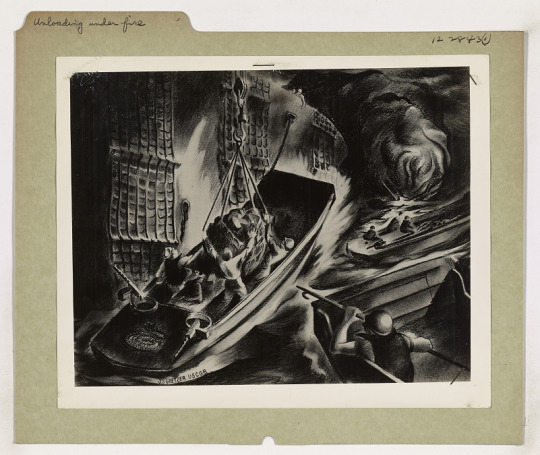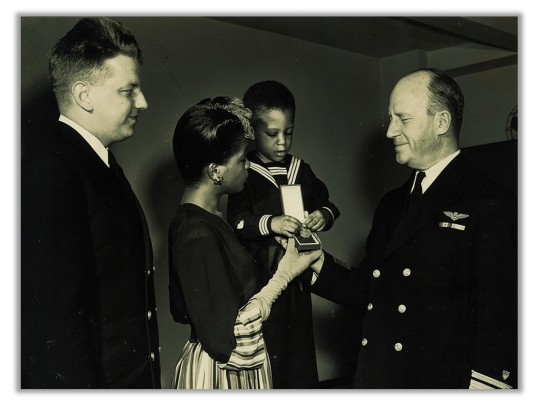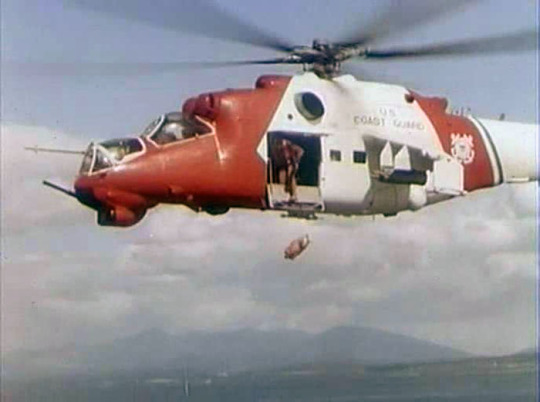#US Coast Guard
Text

US Coast Guard Hall PH-3 flying boat firing a M1919 Browning machine gun in 1943.
#flying boat#us coast guard#coast guard#machine gun#1943#youtube#aircraft#airplane#aviation#dronescapes#military#documentary#ww2#wwii#aviation history#circa 1943#military history#history
272 notes
·
View notes
Text










San Diego Coastie, John…
#coast guard#uniform#hothunks#u.s. coast guard#us coast guard#coastie#handsome#shirtless muscle#shirtless#military boots#foot fettish#feetish#feet#arm pit#sweaty pits#those eyes#cute boys#cute smile#blue eyes#stud
588 notes
·
View notes
Photo

Boundaries of US Coast Guard Sector Commands
303 notes
·
View notes
Text
now that oceangate have stated they believe those in the submersible are dead, can we please not make posts talking about how the ghosts of all the third-class passengers killed the millionaires on board?
like yes, its a poetic idea, but those passengers you claim to be vengeful ghosts were real people. not only is it likely disrespectful on religious grounds because fun fact, not everone on titanic were white westerners, but it is also just fucking disrespectful to create ghost stories about real people who died during a tragedy.
the titanic tragedy was a real thing that happened; the people who died were real people. unfortunately, its one of, if not the most romanticised shipwreck where many real life people have mischaracterised for so long that this is how we now remember them. i mean look at j bruce ismay who wasnt the money-hungry, corner-cutting, evil man hes been made out to be.
how about we not mischaracterise any more folks? and we not create ghost stories about the real people who died?
its really not that difficult to show compassion and respect to the dead.
#titanic#titanic wreck#titan#titan sub#oceangate#oceangate expeditions#tw death#tw mass death#stockton rush#tourism#dark tourism#shipwrecks#capitalism#titanic tourism#titanic tourism submarine#us coast guard#coast guard
107 notes
·
View notes
Text

A big thank you to retired cost guard @headmc1775 for these hot coasties!
23 notes
·
View notes
Text

Unloading Under Fire
Record Group 26: Records of the U.S. Coast GuardSeries: Photographs of Activities, Facilities, and PersonalitiesFile Unit: Art by Gildersleeve through Klein
This image depicts artwork of Coast Guardsmen unloading gasoline during an invasion in the Mediterranean, drawn by Coast Guard Combat Artist John S. Gretzer.
1228431 FROM: PUBLIC RELATIONS DIVISION U.S. COAST GUARD WASHINGTON, D.C. U.S. COAST GUARD COMBAT ART "UNLOADING UNDER FIRE"...WORKING IN HEAVY SEAS, U.S. COAST GUARDSMEN ARE SHOWN UNLOADING TINS OF HIGH TEST GASOLINE IN THIS ARTIST'S CONCEPTION BY JOHN S. GRETZER, CAOST GUARD COMBAT ARTIST. OTHER LANDING BARGES ARE WAITING TO COME ALONGSIDE THE COAST GUARD-MANNED TRANSPORT AS THE INVASION OPERATION TAKES PLACE UNDER FIRE. GRETZER DURING 18 MONTHS AT SEA PARTICIPATED IN THE INVASIONS OF NORTH AFRICA, SICILY AND ITALY. HE IS A NATIVE OF COUNCIL BLUFFS, IOWA. *** * IN REWRITING CAPTION PLEASE MENTION "COAST GUARD." *** *
31 notes
·
View notes
Text

This Week in History: Charles W. David, Jr., WWII Hero
At about this time in 1943, a hero passes away. Coast Guard Mess Attendant 1/c Charles W. David Jr. had been battling pneumonia for weeks, ever since he jumped into frigid waters to save the survivors of a torpedoed American ship.
That ship was USAT Dorchester, torpedoed on February 3, 1943, at about 1:00 a.m. Dorchester is best known for her four chaplains: When the ship was hit, they sacrificed themselves for their troops. They were last seen going down with the ship and praying for the survivors in the water.
It’s been suggested that Charles David was an answer to those prayers.
The story continues here: https://www.taraross.com/post/tdih-charles-walter-david
10 notes
·
View notes
Text




Not an actual US Coast Guard Hind, but a Russian Hind posing as a Coast Guard MH-60 Jayhawk for a Russian movie
18 notes
·
View notes
Text
US Coast Guard vs. narco submarine full of cocaine.
9 notes
·
View notes
Text

By Joss Huot, VietnamWarHistoryOrg Group on FB
#memorial day#lest we forget#remembrance#us army#us navy#us air force#us marine corps#us coast guard#vietnam war
34 notes
·
View notes
Text


(CNN) — What was supposed to be a 10-hour journey to the Titanic shipwreck ended in tragedy, with all five passengers on the missing submersible killed in a catastrophic implosion.
Their deaths were confirmed Thursday, concluding a week-long search for survivors that was closely watched around the world.
The US Navy detected a sound that would match an implosion on Sunday, the day it went missing, and search teams have since found fragments of the Titan submersible, confirming those on board have perished.
But many questions still remain as authorities continue searching for debris, including when the implosion happened and what exactly went wrong with the sub.
Here’s what we know so far.
What is a catastrophic implosion?
An underwater implosion refers to the sudden inward collapse of the vessel, which would have been under immense pressure at the depths it was diving toward.
It’s unclear where or how deep the Titan was when the implosion occurred, but the Titanic wreck sits nearly 13,000 feet (almost 4,000 meters) below sea level.
The submersible was about 1 hour and 45 minutes into the roughly 2 hour descent when it lost contact.

At the depth the Titanic rests, there is around 5,600 pounds per square inch of pressure – several hundred times the pressure we experience on the surface, according to Rick Murcar, the international training director at the National Association of Cave Divers.
A catastrophic implosion is “incredibly quick,” taking place within just a fraction of a millisecond, said Aileen Maria Marty, a former Naval officer and professor at Florida International University.
“The entire thing would have collapsed before the individuals inside would even realize that there was a problem,” she told CNN. “Ultimately, among the many ways in which we can pass, that’s painless.”
Experts say it is unlikely any bodies will be recovered.
The US Coast Guard said Thursday it will continue the search in an effort to recover what it can but warned it was “an incredibly unforgiving environment down there on the sea floor.”
What’s next for the search effort?
Besides searching for the passengers, authorities will also continue to search the sea floor in hopes of discovering more information about what led to the implosion.
It will take time to put together a specific timeline of events, the US Coast Guard said Thursday, calling the underwater environment “incredibly complex.”
So far, they have located the Titan’s nose cone and one end of its pressure hulls in a large debris field, and the other end of the pressure hull in a second, smaller debris field.
“What they would do now is go back to that site and, like cookie crumbs, try to find a trail as to where that would lead,” said Tom Maddox, CEO of Underwater Forensic Investigators, who took part in a Titanic expedition in 2005.
He added that the debris pieces could still be “slightly buoyant” and be carried further away by ocean currents.
“So the big project right now is going to be trying to collect those parts,” he said.
“They’ll mark them, they’ll indicate where they were, and they’ll lay out a map of where those parts were found.”
What is the timeline of the disaster?

The expedition set out from Newfoundland, Canada, on June 16, with the Polar Prince support ship carrying participants to the site of the Titanic wreck.
Then on Sunday, June 18, the five passengers began the dive in the submersible, launched from the support ship, which remained on the surface.
They began the dive around 9 a.m., with their last communication to the surface at 11:47 a.m, according to Miawpukek Maritime Horizon Services, which co-owns the Polar Prince.
They were expected to resurface at 6:10 p.m. but were not seen; authorities were notified at 6:35 p.m. and the rescue operations launched, according to Maritime Horizon.
There seemed to be a brief window of hope after reports emerged that search teams on Tuesday heard banging every 30 minutes, though they were unable to locate the source of the noise.
But the submersible had only been equipped with 96 hours of oxygen, setting Thursday as a key target to locate and retrieve the submersible.
By Thursday afternoon, authorities confirmed the submersible had imploded, saying there does not seem to be a connection between the banging noises and where the debris was found.
A senior US Navy official told CNN the noises were likely some form of natural life or sounds given off by other ships and vessels that were part of the search effort.
It’s still not clear when exactly the vessel may have imploded.
The Navy detected a sound that was “consistent” with an implosion on Sunday, but it was determined to be “not definitive,” so the search for survivors or remains of the vessel continued.
The US Coast Guard said on Thursday it had set up sonar buoys in the water for at least the last 72 hours – meaning from at least Monday onward – but they did not record any sign of an implosion.
Who was on board?

The five men on board included the CEO of the tour operator, a British businessman, a renowned French diver, and a Pakisatani billionaire and his son.
OceanGate Expeditions, the Titan’s operator, said Thursday it believed CEO Stockton Rush and the other passengers to be “lost,” adding that the company’s employees were “exhausted and grieving deeply over this loss.”
Rush, 61, founded OceanGate in 2009 with a stated mission of “increasing access to the deep ocean through innovation.”
In a series of interviews, Rush said he believes deeply that the sea, rather than the sky, offers humanity the best shot at survival when the Earth’s surface becomes uninhabitable.
As CEO, Rush, who graduated from Princeton in 1984 with a degree in aerospace engineering, oversaw the company’s “financial and engineering strategies” and provides a “vision for development” of crewed submersibles, according to his bio.
But in his eagerness to explore, Rush often appeared skeptical, if not dismissive, of regulations that might slow innovation.
British businessman and adventurer Hamish Harding was also on board.
Based in the United Arab Emirates, he was the chairman of Action Aviation, an aircraft brokerage – but was better known for his various expeditions.
He was part of a flight crew that broke the world record for the fastest circumnavigation of the globe via both poles;
He was one of the first people to dive to the Challenger Deep in the Pacific Ocean, widely believed to be the deepest point in the world’s oceans;
He went to space on the Blue Origin flight; and
He was part of two record-breaking trips to the South Pole.
French diver Paul-Henri “PH” Nargeolet had decades of experience exploring the Titanic.
He served as the director of underwater research at RMS Titanic Inc., the company that has exclusive rights to salvage artifacts from the ship.
According to his biography on the company’s website, Nargeolet completed 35 dives to the Titanic wreck and supervised the recovery of 5,000 artifacts.
He also spent 22 years in the French Navy.
In a statement, his family called him one of the greatest deep-sea explorers in history, adding:
“But what we will remember him most for is his big heart, his incredible sense of humor and how much he loved his family.”
Lastly, Shahzada Dawood and his son, Suleman Dawood, were from a prominent Pakistani business family.
Dawood Hercules Corp., their business, is among the largest corporations in the country, with a portfolio spanning energy, petrochemicals, fertilizers, information technology, and food and agriculture.
In a statement online, the family patriarch Hussain Dawood and his wife, Kulsum Dawood, said:
“Please continue to keep the departed souls and our family in your prayers during this difficult period of mourning.”


#Titan submarine#catastrophic implosion#underwater implosion#Titanic#wreckage#Rick Murcar#National Association of Cave Divers#Aileen Maria Marty#US Navy#US Coast Guard#sea floor#Tom Maddox#Underwater Forensic Investigators#Newfoundland#Canada#Polar Prince#Miawpukek Maritime Horizon Services#sonar buoys#OceanGate Expeditions#Stockton Rush#Hamish Harding#Action Aviation#Paul-Henri “PH” Nargeolet#RMS Titanic Inc.#Shahzada Dawood#Suleman Dawood#Dawood Hercules Corp.
26 notes
·
View notes
Text

THE US COAST GUARD?!
22 notes
·
View notes
Photo

USCG MH-68A Interdiction Helicopter on a Homeland Security patrol over New York City
67 notes
·
View notes
Text

Coasties
20 notes
·
View notes
Photo

TDIH: USCG sinks German submarine U-352
On this day in 1942, a United States Coast Guard cutter sinks a German submarine just off the coast of North Carolina. Dozens of Germans are captured.
Yes, you read that correctly. A German submarine was patrolling the east coast of the United States during the early months of World War II. The Germans captured that day were the first foreign prisoners of war to be held on American soil since the War of 1812.
Trouble began on the afternoon of May 9.
U.S.C.G. Icarus was then traveling from Staten Island, New York, to Key West, Florida. She was equipped with relatively obsolete sound detection gear. Nevertheless, at about 4:20 p.m., she picked up a “mushy” sound contact off her port bow.
The story continues here: https://www.taraross.com/post/tdih-uscg-icarus
35 notes
·
View notes
